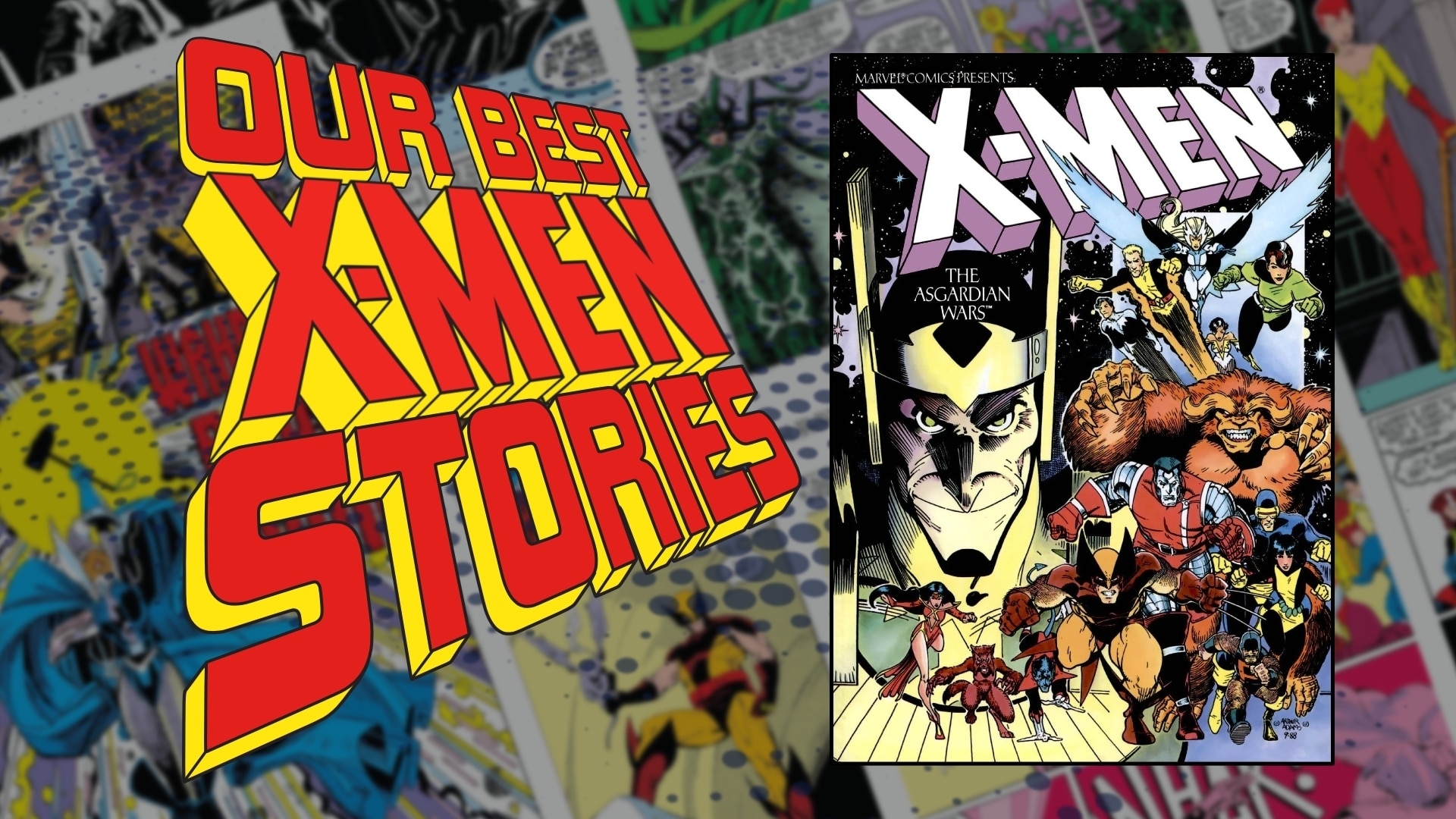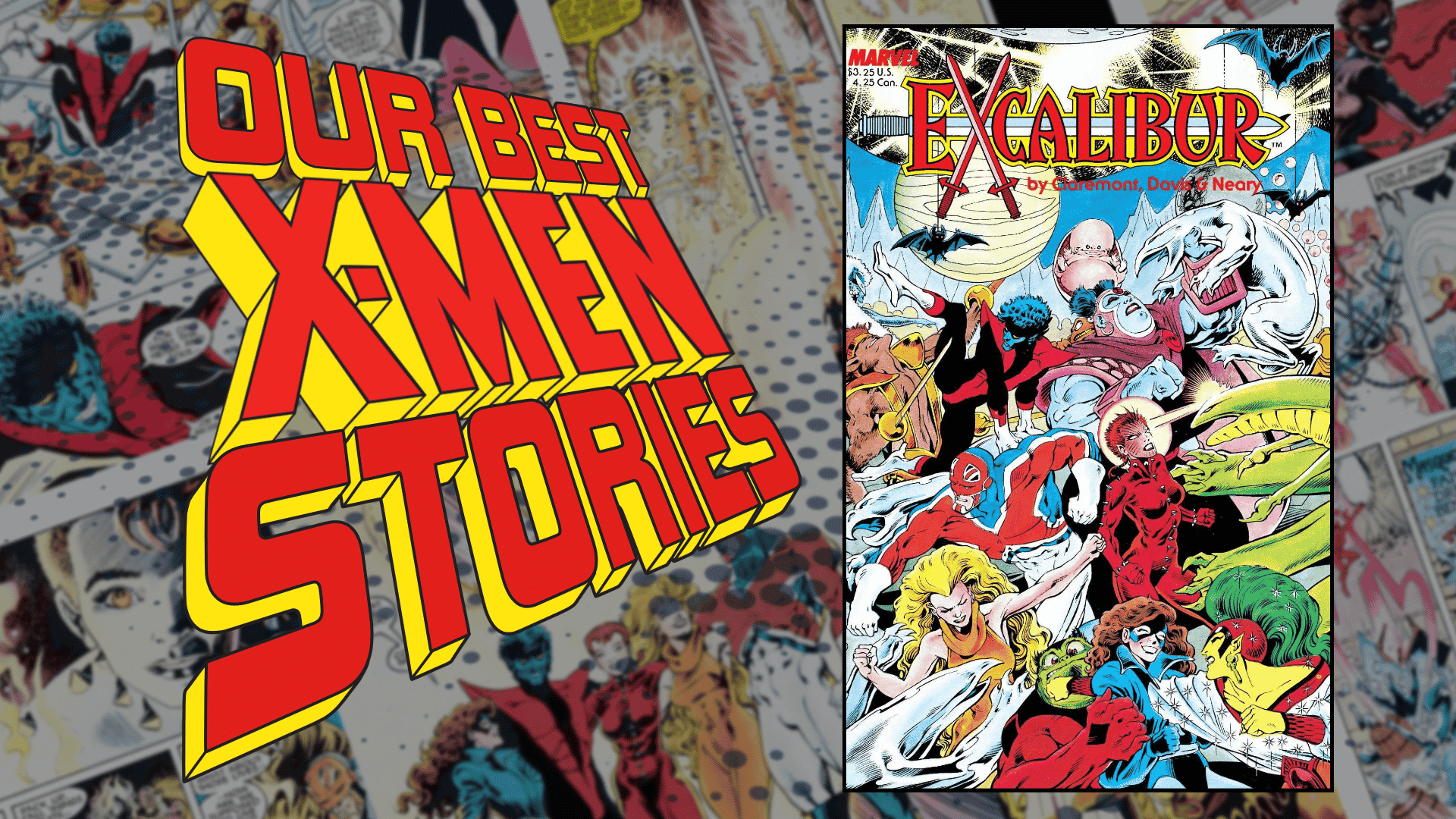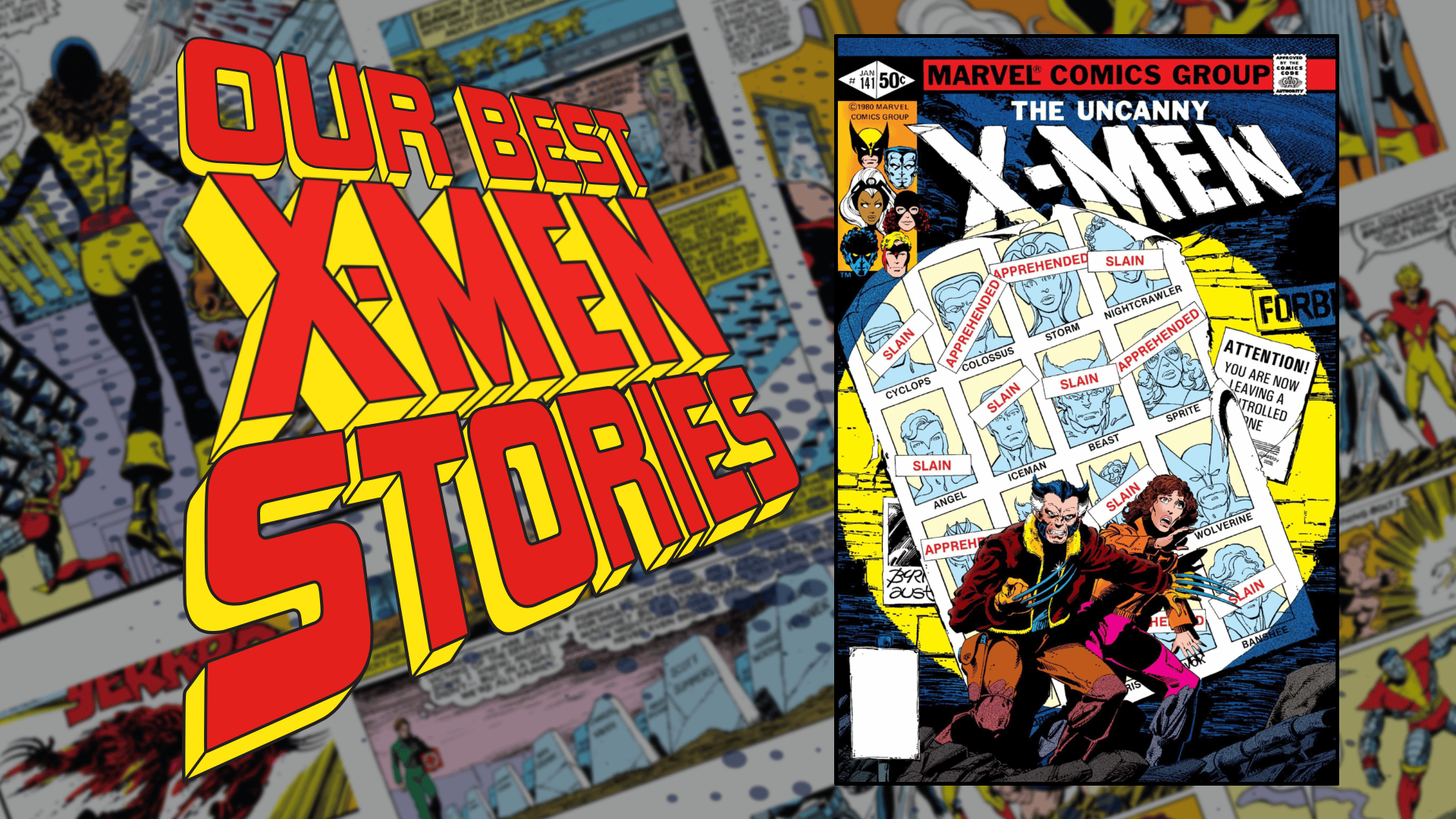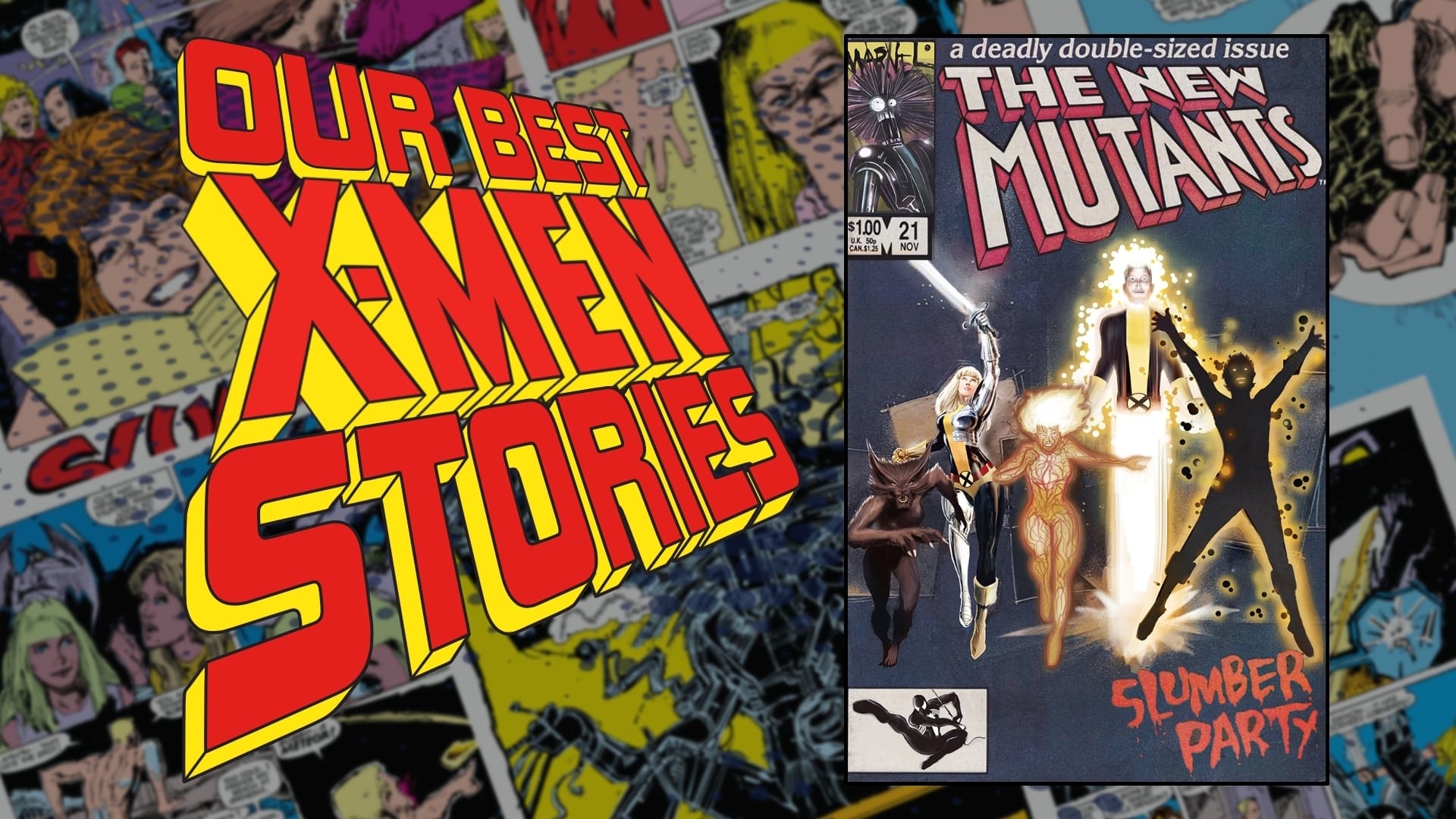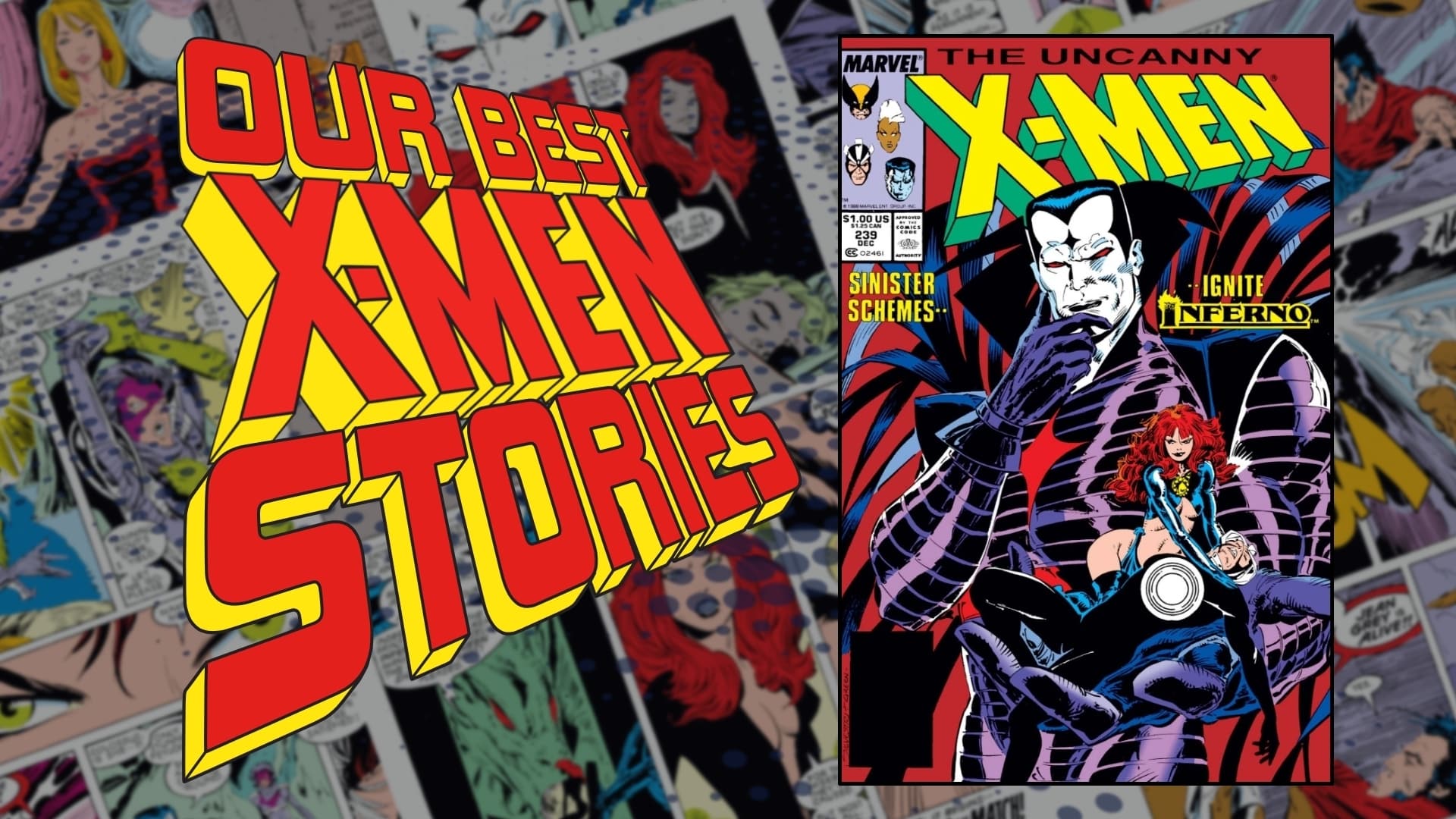In a franchise that has run for over 50 years, there is bound to be debate about which story is “the best”. Listicles will be written, podcasts will be recorded, debate will be never ceasing. In this series, we’ve gathered ComicsXF writers to share what they personally think are their best X-Men stories ever.
Comprising X-Men/Alpha Flight #1-2, New Mutants Special Edition #1, X-Men Annual #9 (1985). Written by by Chris Claremont, penciled by Art Adams and Paul Smith, inked by Bob Wiacek, Mike Mignola, Al Gordon, Terry Austin, and Art Adams, colored by Gylnis Oliver, Petra Scotese, Bob Sharen, Christie Sheele, lettered by Tom Orzechowski and Lois Buhalis.
When I was a kid, my parents liked to take me and my brother on day trips to Baltimore. We’d hop in my father’s big goofy conversion van and drive three hours to the tourist trap known affectionately as the Inner Harbor. Bookended by the National Aquarium and the Maryland Science Center, the Harbor guaranteed funky looking fish and dinosaur exhibits in a single day. It was always a destination we loved. Would we see the sloth hiding high in the simulated rainforest? Would there be one of those fun plasma balls that would make my brother’s hair stand on end?
But there was a secret, added bonus to these trips, beyond whatever family bonding time and purported learning we might have done. Inevitably, there was a trip through the shops that lined the water. Past the singing fudge shop, upstairs from the weird hat store, and beyond the endless crab merch was a small but very cool little comic book store.
I didn’t know it at the time, but Comic World was the fourth shop opened by future Diamond Distribution CEO and former Orioles co-owner Steve Geppi. A nice selection of back issues was organized in bins in the center of the shop, and the walls were lined with newer releases and my real target: trade paperbacks. Keep in mind that back in the late 80s, trade paperbacks were a bit of a rarity. And if I did see them, it was likely at Waldenbooks or B Dalton in the Mall. But as publishers entered the 90s they realized there was profit in collecting famous storylines into TPBs, especially after the mainstream success of books like Frank Miller’s The Dark Knight Returns (1986). As a kid, I was used to only owning a few issues I’d snagged off spinner racks. So the idea of reading a chunk of unbroken continuity made my heart rate jump. After my parents had already bought my brother astronaut ice cream and a stuffed animal, it was easier to ask them to shell out for a big thick hardcover comic that would keep me engrossed for days on end. Sometimes, I even saved up my own allowance to buy something special.

And this is how, on a summer day in 1990, I became the proud owner of my best X-Men story: Asgardian Wars, written by Chris Claremont with art by Paul Smith and Art Adams. Asgardian Wars was one of maybe three X-Men TPBs released at that time. I could have gotten the quintessential “Dark Phoenix” saga with a great Bill Sienkiewicz cover, or the equally fantastic issues compiled in From the Ashes (all hail Paul Smith, who we’ll get to later). But I was ultimately sold by Art Adams’ cover image of a Loki sporting a menacing grin as the combined might of the X-Men, New Mutants, and Alpha Flight race forward, confronting an unknown threat. The TPB was a monster. Reprinting X-Men/Alpha Flight #1-2, New Mutants Special Edition #1 and Uncanny X-Men Annual #9, the book clocks in at about 250 pages, and you’d better believe I gave the spine of that thing a workout as I read it again and again and again and, well, again.
In retrospect, my childhood fascination with this story is really weird. Asgardian Wars was partly inspired by the success of Walt Simonson’s epic run on The Mighty Thor (1983-1987), a book I hadn’t read a single issue of. To truly “understand” my best X-Men story, you’d think I would have needed to know volumes about Asgard and its population of dwarves, demons, and whoever else lives there. (Did I hear something about flying goats and worthy frogs?) But I had no idea who the Warriors Three were, and this was my introduction to villains like Loki and Enchantress. Weirder still, this book was my primary introduction to the New Mutants and a bunch of X-Men lore. At ten years old, my comic book collection consisted largely of individual issues of Transformers and random Marvel comics my family ordered for me through the J.C. Penney catalog at Christmas. (For those of you who weren’t kids in the 80s: Marvel did this thing where you could order packs of random back issues from the department store. They came with a “collector’s edition” short box and a guide to comic book collecting. For a kid like me, it was pretty much the coolest freaking thing that ever existed.)
When I first read Asgardian Wars, my X-knowledge was almost entirely gleaned from Classic X-Men #44 (1990), which usefully reprinted the recap issue Uncanny X-Men #138 (1980), plus a few other random issues released around the same time that made absolutely zero sense since I didn’t have any of the issues before or after. The fact that the Asgardian Wars TPB contained two connected stories with a beginning, middle, and end was huge! An absolute revelation in comics reading. And what stories they were.

The showstopper, of course, is the two-part New Mutants/X-Men story that begins with New Mutants Special Edition. It could have easily been called New Mutants Annual #2, especially since the title didn’t have an official annual in 1985 (#2 would come out in ’86). The heft of Claremont’s X-Men annuals was famously remarked upon in the (also oversized) Uncanny X-Men #200 (1985), where editor Ann Nocenti uses her editor’s note to threaten to shoot Claremont if he “pulls as stupid a scheduling stunt as this again.” But there is something truly special about the Special Edition. Claremont tasked Adams with a massive endeavor; the issue clocks in at a whopping 64 pages and brags about it on a wraparound cover. But Adams was fresh off his six-issue Longshot series (1985-86), penned by Ann Nocenti; the final issue of that one was also an oversized 40 pages, so Adams had proven he was up to the task. Nocenti introduced Claremont to the artist’s work and Adams began work on Asgardian Wars before Longshot #1 was released.
The main visual difference between Adams’ work on Longshot versus his work on Asgardian Wars is that the former pairs him with Whilce Portacio, Bill Anderson, and Scott Williams on inks, while the latter is inked by Terry Austin, Al Gordon, and a young Mike Mignola (who, apocryphally, I’ve read was the original solicited artist). Austin, Gordon, and Mignola provide a lighter touch, which is a better match for Adams’ intricate, sometimes-busy linework. Adams also lays down some of his own inks, something he’s continued to do up to the present day, depending on the project. The result is finished pages that seem more true to Adams’ cartoony but detailed style.
The New Mutants Special Edition setup is fairly simple and employs one of Claremont’s favorite tropes: split the team up, let them go on independent adventures, and then bring them back together as a stronger, more cohesive unit. Loki is infatuated by Storm and decides to kidnap her. Since Storm was caring for Karma, who had recently been possessed by the Shadow King (more on that in a second), the New Mutants are kidnapped and dropped into Asgard. I would say wacky hijinks ensue, but the individual trials each character endures are actually pretty harrowing. Magma is turned into a faerie, Dani becomes a Valkyrie, Rahne finds love with a half-wolf god. The only one having a good time is Sunspot, who embraces a new celebrity status. They all reunite to rescue Illyana from the clutches of Enchantress, but when they’re faced with whether or not to return to Earth, Sam is surprised to find many of his teammates don’t want to leave! The X-Men enter the fray in the X-Men Annual, after Kitty has a vision of Storm and Magik in Asgardian regalia. They employ one of Arkon’s handy arrows from a previous annual to rescue their friend. This half of the story is much more straightforward. The X-Men team up with the New Mutants and help Storm break free of Loki’s spell. In the end, they all decide to return to Earth together, leaving a ticked off Loki behind.
This epic two-parter allows each of the New Mutants to explore who they are and who they could be, with all the drama and teenage angst the New Mutants brand had become known for.
Meanwhile, Storm gets to explore what it would mean to be a goddess on another plane. And everyone involved has to decide whether to follow their own paths in a magical realm or return to a world that hates and fears them. The story is action-packed, emotional, and allows growth for everyone involved. Even Claremont seems to recognize that his most recent decisions regarding Karma need rectifying (see the racist and fatphobic caricature on display in New Mutants #31-34 (1985), and quickly sends the character on a Dune-like quest to return to form. Questionable body politics aside, the story feels like it has stakes in ways most annual stories don’t, and the exploration of the fantastic unfamiliar world gives our protagonists new ways to mess up and save each other in exciting ways.

The more subtle part of Asgardian Wars, and the story that got Loki riled up in the first place, is the two-part X-Men/Alpha Flight, again by Claremont but with art duties by Paul Smith and Bob Wiacek. The late 80s/early 90s in mainstream American comics is often remembered for the growing popularity of artists like Rob Liefeld and Jim Lee, whose brash and exciting departure from naturalistic house styles set sales records and, in Lee’s case, remains beloved by many 21st century fans. I have to admit that, as a kid, I didn’t quite get the perfection of Smith & Wiacek’s lines compared to the flashy work of Adams. I was years away from reading From the Ashes and realizing it’s my quintessential X-Men era, which would largely define the characters for me up to this day. Smith only drew 10 issues of Uncanny X-Men; X-Men/Alpha Flight would be the final two issues he would draw to make it a solid year. He wouldn’t return to the characters for another four years, when he worked with Louise Simonson on the “Judgement War” storyline in X-Factor. So any Paul Smith of the era feels precious to me.
The Claremont/Smith story is calmer too, as the X-Men and Alpha Flight must grapple with Madelyne Pryor and a group of airplane passengers who have been given godlike abilities and plan on creating a Utopia. The group ultimately give up this “gift” from Loki after they discover that the powers mean the end of their creative abilities and that the fountain they obtained their powers from kills anyone with magical abilities. It’s not an action-packed story. It’s far more philosophical, forcing the reader to think about what sacrifices, if any, would be worth to create a perfect society. The story gives meaningful (and needed) screentime to Maddie Pryor, whose backstory was still a mystery, and to Rachel Summers, who was still struggling mightily to adjust to the 20th century, not to mention the challenge of interacting with the future-father who doesn’t know he’s her future-father (ah, the Summers family tree).
Long-time listeners of Battle of the Atom (third most popular X-Men podcast in the world!) will remember Zack and I ranked Asgardian Wars very early in the show, way back in Episode 17. Our special guest was Elizabeth Allie, co-host of The Lightning and the Storm podcast recapping the Walt Simonson era of Thor with X-Plain the X-Men co-host Miles Stokes. Even then, I was very clear: Asgardian Wars should be the #1 story on our list. I was passionate and tried to remain reasonable when it didn’t quite hit that highest mark. Still, we are just about to hit the five-year mark on Battle of the Atom. In that time, the show has ranked over 650 stories and Asgardian Wars has remained in our Top 10, holding strong at #7 between God Loves, Man Kills and the original Wolverine mini (both released in 1982).
Which puts it in very good company. But in my heart, I know Asgardian Wars is the best X-Men story of all time. It’s the one I’ve reread the most; the one with the best artwork; the one that threw the best characters in the Marvel universe into the best place in the Marvel universe; and the one that’s only grown in my estimation as I’ve explored the Simonson Thor run and placed Paul Smith into my personal art hall of fame.

The book is a totem from a bygone era of Chris Claremont’s imagination running at full speed with very little push-back from his collaborators or the company publishing his work. It represents a level of creative freedom within a corporate structure that I’m sure most working in comics would love to attain. As a reader, I can see Claremont pushing the boundaries on what he can accomplish with the books, with his characters, and collaborating with amazing talent to execute the story.
Whether we admit it or not, we are all, in so many ways, shaped by the things we were obsessed with when we were young. Asgardian Wars remains an indelible memory of my youth, both as a physical object and as an enduring story. Decades later, it continues to reward repeat reading. Many objects of fascination from that era can’t hold up to the scrutiny of an adult eye. But I will always love this book. My best X-Men story of all time: Asgardian Wars.
Adam Reck is the cartoonist behind Bish & Jubez as well as the co-host of Battle Of The Atom. Follow him @adamreck.bsky.social.

